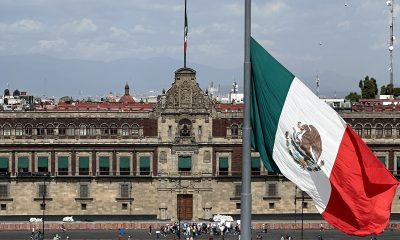homepage news
LGBT detainees describe harrowing life inside Eloy
Notorious facility is home to scores of asylum seekers; we go inside to hear their stories
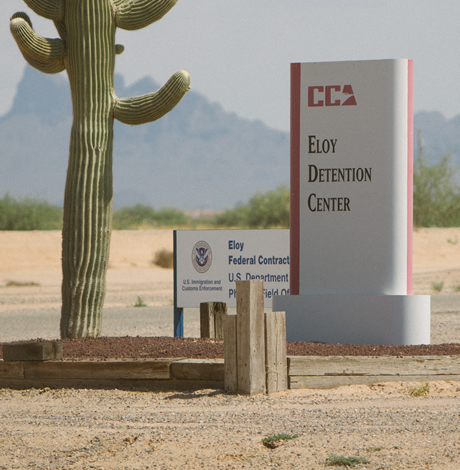
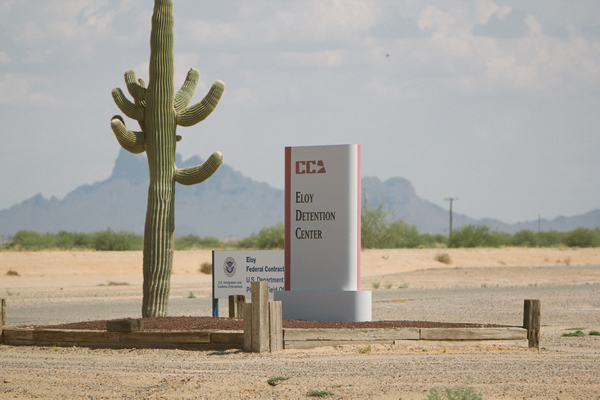
The Eloy detention center in Arizona sits alone in the desert, an imposing de-facto prison for asylum seekers. (Photo by yashmori; courtesy Flickr)
By GREG MARZULLO
Special to the Blade
Moths cover the walls in the claustrophobic antechamber of the Eloy detention center in Eloy, Ariz. The fluttering insects are dark brown, obvious against the stark white cinderblocks where they crawl toward the room’s single door.
“My grandmother said they were reincarnated souls,” said Dago Bailon, my guide to this Dantean holding cell for America’s undocumented immigrants. I’ve arrived at Eloy with Bailon and other representatives of Trans Queer Pueblo, a Phoenix-based organization whose goal is to assist LGBT undocumented immigrants, providing legal help, access to healthcare, job training and a sense of community.
The town of Eloy is about 80 minutes south of Phoenix, along a desolate expanse of Route 10, and the detention center stands completely isolated from any commerce or housing, although the facility is one of the town’s leading employers. The August sun is unforgiving on the day I visit with Trans Queer Pueblo, a trip organizers and volunteers make monthly to visit detainees in the hopes of connecting them with legal aid.
Five rows of razor wire tower over our heads as we walk up to the entrance. We’re buzzed in by unseen guards at each subsequent door, and as the last one shuts behind me and we enter the detention center, I’m grimly aware of how many obstacles are between me and the outside world.
Each member of the group has the name of someone inside, a person to visit. We take a number and wait to be called. After about half an hour, it’s my turn, and I go up to the guards’ desk. They take my paperwork, my passport, my driver’s license and my bank card before I walk through the metal detector. I am allowed no cell phone or even a pen and paper. I now have no identity — a non-entity inside a veritable prison.
I first met Bailon months earlier at a café in Phoenix.
“I crossed the border,” he said, “I was around 8 or 9. That was an experience I’ll never forget.”
Many of the people I spoke to for this story tell me of their own migration, as well as those of family members – parents, grandparents, siblings and cousins. They are harrowing tales, involving insurmountable odds and, sometimes, death. Since the U.S. Border Patrol began keeping statistics on migrant deaths in 1998, the Arizona border boasts the deadliest record of any other border area in the country.
Bailon, who is now 29, crossed with his grandmother and brother and remains undocumented in a state infamous for its rough handling of Mexican immigrants. In 2011, he helped to found the Arizona Queer Undocumented Immigrants Project in response to the state’s 2010 legislation SB 1070 that was widely regarded as the most draconian immigration law in the country. One of its provisions stipulated that police officers were required to demand papers from anyone they suspected of being in the country illegally. If the suspected immigrant did not have their papers on them, it was considered a misdemeanor.
“Initially, our mission was to bridge the LGBT and migrant communities,” he said. “We saw a lot of the movement was focused on the migrant community and was really religiously led.”
Within five years, however, Bailon and others founded Trans Queer Pueblo in order to address the wide scope of disenfranchisement faced by LGBT undocumented immigrants – healthcare, job training, legal aid and, of course, the confluence of immigration and homophobia or transphobia.
“LGBT communities, the migrant community and the detention movement was really focused on family ties,” said Bailon. “Some of us are running away from our families.”
Even in the organization’s nascent days, Bailon and others heard of gay men, lesbians, bisexuals and trans people in detention centers who desperately needed contacts, legal aid and advocacy to help them navigate a system that often proves deleterious to their safety.
“For people who are LGBTQ, immigration detention is more than just unpleasant – it’s, in fact, dangerous,” said Aaron Morris, executive director of Immigration Equality, a national LGBT immigrant rights organization. “LGBTQ people are much more likely to be subjected to physical assault, trans women in particular.”
Physical and sexual assault and suicide are commonly reported from those inside the detention centers. One of the recent cases that gained national attention was that of Marichuy Leal Gamino, a transgender woman who reported being raped by her male cellmate in 2014 at Eloy.
“They’re all jails at some point,” Morris said of the detention centers, before adding, “We have rarely heard good things about Eloy.”
A 2013 study by the Center for American Progress stated that LGBT detainees are 15 times more likely to experience sexual assault than their heterosexual counterparts – a threat well known by Karyna Jaramillo, a trans woman who spent two weeks in Eloy in the summer of 2015.
“When I got there, they started yelling at me,” Jaramillo said of the other detainees, speaking to me through an interpreter. “They would yell homophobic slurs, transphobic slurs. They started screaming, ‘Yeah, we’re going to have someone we can get laid with tonight, fresh meat.’ They would grab their parts and tell me, ‘Look at this, this is all you’re going to have.’”
As I walk into the larger waiting room at Eloy, “Captain America” plays on the television. The iconic white hero frees prisoners of war from a cage just as we’re about to enter one. Chairs and benches are filled with visitors, mostly young mothers trailing children or elderly men and women, some limping, others with the shakes. Every single one of the people I see in the waiting room over the next three hours is Latino.
Shortly, the discomfort and anxiety at being trapped inside gives way to the tedium of bureaucracy. There’s nothing to be done but wait for our visiting time slot, which could be in an hour or several. The credits roll for “Captain America,” but not before a little girl claps her hands and chants his name in excitement. Family members buy candy, chips and Hot Pockets from the vending machines that only take special payment cards you can purchase for a fee outside the metal detector.
Eventually, our turn comes, along with about 20 others, and we’re ushered into a holding pen. The door shuts behind us and locks. Another door in front of us opens, and we’re finally in the visiting room.
It’s packed. A mother carrying a boy with Down syndrome rushes to embrace a man, seemingly the boy’s father. There are smiles and tears. People share Fritos, candy and conversation while a tall, broad-shouldered guard patrols the room.
Bailon and I meet with an immigrant who describes himself as bisexual. He doesn’t know I’m a reporter. If I were to declare myself a journalist upon entering Eloy, I never would have made it past the front desk, and the circulating guards in the room make it impossible to have a private conversation.
What I can say is that listening to his story – the death threats in his home country, the mind-numbing conditions of detention, the Kafka-esque bureaucracies he’s wrangling in order to obtain asylum – I wonder how anyone in this place retains their sanity.
Jaramillo said her stay at Eloy was a battle against her own mind as much as the system itself.
“It was a constant fight with my thoughts,” she said. “It was this war that was happening inside my head – desperation, depression…absolute fear.”
Jaramillo, 46, only got out of Eloy after she finally spoke to a U.S. Immigration and Customs Enforcement (ICE) representative, who set her bond price at $5,000. Her family was only able to raise $4,500, but ICE accepted the lesser amount and let her go.
“That’s why sometimes cases take forever,” she said, “because we are a bank for the state and for this country.”
Jaramillo, born and raised in Cuernavaca Morelos, about an hour south of Mexico City, first came to the United States 27 years ago. She says there weren’t as many border guards then and crossing was relatively easy. Thirteen years after her initial entry, she was living in Texas and got pulled over by police for expired license plates. She was deported, and the journey back to the United States was torturous. At first, she was caught, but she made the attempt again the same day.
“I had to walk for two nights and two days. We had to get water from where the cows drink. It’s dirty. There’s cow poop. It was contaminated. At the end, my thighs gave out on me, and I was pulling them with my hands so I could continue walking. We had to pay a lot of money – about $3,000 – to the coyotes.”
“Coyotes” are human smugglers who get people across the border for a steep price, and they’re known for leaving their charges to die in the desert or demanding more money than originally agreed upon.
When I asked Jaramillo what would drive her to risk such an experience across the Sonora, she begins to cry.
“I had been threatened before [in Mexico] by gangs and people who told me that I had to sell drugs or had to give my body to them.”
About a decade after her second crossing into the U.S., Jaramillo, who has struggled with alcoholism, began drinking again. She was stopped by the police, and upon investigating her background, they discovered she had an unpaid DUI on her record from 10 years prior. The police contacted ICE, and six ICE officials picked her up outside of the gym. They handcuffed her and eventually sent her to Eloy.
“I’ve always been afraid of the police,” she said. “In Mexico, the police, instead of helping, are part of the corruption. They’re the ones harassing you, and the same happened with ICE. They never respected my gender identity. They continued to treat me as a man, telling me I was not a woman.”
She was detained with other men, and in recounting her time there, she begins to cry again.
“I was thinking if I could make it another day. If I was going to be able to stay alive in there, knowing somebody could start something and get me in trouble. If they send me back to Mexico, I would lose my life. I had the fear…of somebody touching me without my consent and not being able to protect myself, and if I do that, they’re going to say it was my fault.”
Without access to her hormones, Jaramillo said she began thinking of committing suicide. She told the medical staff at Eloy about her needs, and they did give her hormones and antidepressants. However, she’s dubious about the center’s motivation and fast turnaround time.
“I know that at that time, something had happened and they were investigating the detention centers. Far from wanting to help me, I think they wanted to look good.”
The Eloy detention center is run by CoreCivic, the newly renamed Corrections Corporation of America, a publicly traded company that owns and runs both prisons and detention centers. Its reach in the industry is large, trailing only the federal government and three states, and it works hand-in-hand with ICE, which has 34,000 beds reserved for immigrants nationwide every night. At the time this article was written, CoreCivic’s shares were going for $20.92 on the New York Stock Exchange, after a 43 percent jump in price the day after the presidential election.
When dealing with privately owned companies of this scope, questions of regulation are bound to surface with immigrant rights advocates decrying the conditions in which detainees are held at private detention centers.
“In thinking about regulations,” said Morris of Immigration Equality, “you should think about two different schemes. For facilities that are owned and operated by the federal government, they are subject to regulation. There are detention standards they are required to obey. However, the privately run facilities are under no similar regulatory scheme.”
Morris is quick to point out that it’s not a complete free-for-all at privately run facilities. The federal government negotiates terms and regulations with any new facility or those seeking a renewed contract, but, he said, “the U.S. government has historically said it’s hard to increase requirements on facilities.”
According to a November 2016 Washington Post article, ICE holds more than 60 percent of its detainees at private facilities that follow, as Morris puts it, their “own set of rules,” which, historically, hasn’t been good for LGBT detainees.
“If you’re talking about a vulnerable population of people who have different needs or additional factors that make them in danger, relying on a corporation that has mixed or terrible reports or histories of abuse – it seems irresponsible at the very least. Surely, when you throw in a profit motivation, it changes the dynamic of how people are treated in a facility.”
In statements sent to the Blade by CoreCivic and ICE, both parties stressed their commitment to insuring the safety and well being of detainees.
“We have a zero-tolerance policy for all forms of sexual abuse and sexual harassment,” wrote Jonathan Burns, director of public affairs for CoreCivic. “We take very seriously and investigate any reported allegations. Under our policy, any allegation of this nature is also reported to outside law enforcement so that an independent investigation can be conducted.”
He also stated that the company’s “eight ICE-contracted facilities adhere to the federal government’s Performance-Based National Detention Standards,” a detailed document of instructions regarding all aspects of a person’s detention, from hygiene to segregating an individual in solitary confinement to secure their safety or, in certain cases, as a form of discipline.
Yasmeen Pitts O’Keefe, an ICE public affairs officer, also said in an e-mail that ICE “has a zero tolerance policy for any kind of abusive or inappropriate behavior in its facilities and takes any allegations of such mistreatment very seriously.”
In 2015, ICE came out with its Transgender Care Memo, a set of policies that, according to Pitts O’Keefe, “was the result of a six-month agency working group that examined issues and concerns related to LGBTI detainees and incorporates input from transgender individuals who visited various non-federal facilities across the country to observe best practices.”
ICE also has a designated national LGBTI coordinator and field office liaisons for local officers. Pitts O’Keefe reports that detainees have access to a toll-free number where they can report any abuse, even anonymously if they choose, and a flier about the hotline is posted in every ICE facility.
Yet neither Pits O’Keefe nor Burns addressed my question about the seeming discrepancy between what the official policies are and the first-hand accounts of LGBT immigrants’ detention experience.
Flor Bermudez, the detention project director at the Transgender Law Center in California, fills in some of the gaps, especially about ICE’s Transgender Care Memo.
“One of the biggest criticisms is that it’s optional,” she said. “The one facility where they are doing it is Santa Ana [in California]. Because this policy is only optional for facilities…the culture in the entire system has not changed.”
Santa Ana’s city jail has a special transgender unit for immigrants, but Bermudez calls it “terrible” and said when detainees at other centers consider disclosing their transgender status, “they know the consequences will be solitary in Eloy or [a transfer to] Santa Ana. Many of them choose not to disclose and they are exposed to the risk.”
Finally, she said LGBT sensitivity training for staff at the detention centers, at least as it concerns trans people, is inadequate.
“They’ve developed a one-hour video. The video has Caitlyn Jenner as an example of a transgender woman. It also has a transgender immigrant cartoon. The training…has no backup of an enforceable policy. It’s not helpful or efficient.”
CAP released a report in October stating that ICE officials kept greater numbers of LGBT immigrants in detention during fiscal year 2015 than 2014 – 88 percent of the time – instead of releasing them to community advocacy groups for monitoring.
In 2014, ICE, at the direction of the Department of Homeland Security Secretary Jeh Johnson, began to implement the Priority Enforcement Program (PEP), which enabled law enforcement and ICE officials to work together on identifying undocumented immigrants. When local law enforcement arrests and books someone, they send fingerprints not only to the FBI, but, under PEP, to ICE as well, allowing all parties to identify undocumented immigrants considered a threat to public safety – a designation defined by Congress in 1996 with the Illegal Immigration Reform and Immigrant Responsibility Act.
“Certain portions of the law [don’t] just authorize detention of immigrants – it requires it,” Morris said, adding that when the law was passed in 1996, “Congress was focused overmuch on punitive measures. A lot of the laws they passed offered very little wiggle room for immigration officers on the borders.”
Specific petty crimes (e.g. moral turpitude, theft or fraud) on someone’s record automatically result in detention. Morris tells of one of his clients who had AIDS. Being poor, the 19-year-old male tried to self-medicate, stealing Advil and nasal spray to keep his nose from running. Technically, he could be held as a flight risk or as a danger to the community because of the two thefts, something Morris calls “ludicrous.”
It’s no secret that the Obama administration has deported more people than any other, claiming they’re focusing on criminals instead of young people and families. However, something as innocuous as jumping a New York subway turnstile can result in a criminal charge.
“I think the Obama administration was great at…tossing what was a temporary Band-Aid and then allowing us to bleed in another way,” said Bailon.
Despite the Obama administration’s high deportation numbers, the looming Trump presidency is causing even more anxiety.
“We are in a state of aggressive triage,” said Morris. “When you think about what President-elect Trump has really prioritized throughout his campaign and continuing through his president-elect status, he has consistently said he is going to deport people – a great number of those individuals will be LGBT people.”
“We’re figuring out strategy,” Bailon said. “LGBT communities are criminalized at a higher rate. We understand that we might be the first ones to be deported.”
For Bailon, Jaramillo and others, returning to Mexico or other countries where homophobic and transphobic violence are the norm, the increased threat of deportation takes on life-or-death consequences, and the day-to-day pressure of living in the U.S. as an undocumented immigrant increases exponentially.
“It’s very difficult to live like this every day,” said Jaramillo, who is in the midst of fighting her asylum case. “It’s like when someone tells you, ‘we’re going to send you to this place,’ and you’re waiting for somebody to shoot you…and end your life.”
After almost four hours inside Eloy, it’s time for us to go. As I walk out the door of the visiting room, I cast a backwards glance at the crowd and see a door at the opposite end. It looks just like the one I’m standing in – the same color, presumably the same make – but its destination is much different. In a few moments, I’ll get my passport, driver’s license and debit card back with relatively little hassle. I’ll pass through three more doors and stacks of razor wire, go to the parking lot, get in the car and text my husband that I’m out. I’ll drive home to my apartment, and my life will resume. That other door, though, on the far end of the visitors’ room, leads to a labyrinth where people seeking asylum or hoping to live that capricious American dream are lost in the bowels of institutionalized racism, xenophobia and anti-LGBT bias.
Sitting at lunch with the Trans Queer Pueblo workers after our visit, Jaramillo asks me how my experience was inside. I tell her that I was surprised not to be frightened. More than anything, I was disgusted. I ask her what makes her come back to this place where she, herself, suffered detainment and the possibility of sexual assault.
“To share the pain of the others,” she said. “To feel the impotence of it. We can leave and continue with our lives, and they’re caged like rats. I’m here because I want to continue fighting against this feeling of impotence. To open those gates and let everyone free.”
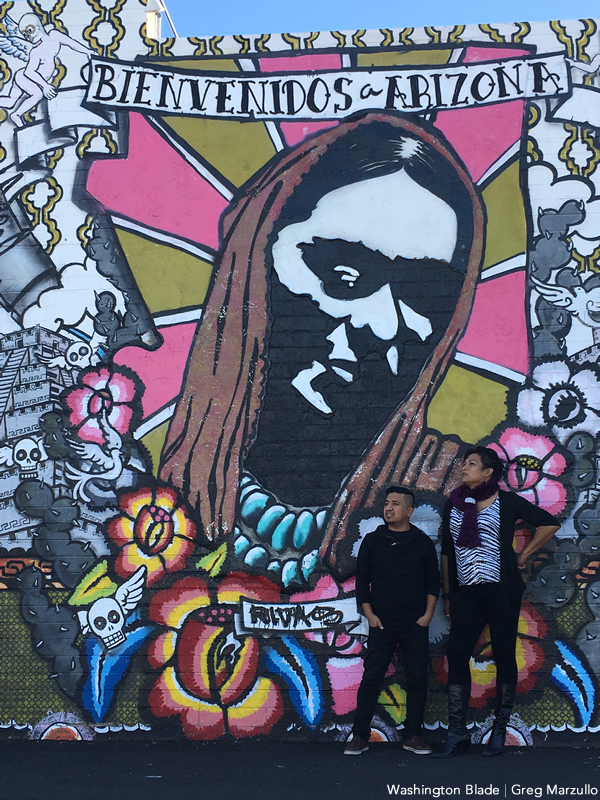
Dago Bailon (left) and Karyna Jaramillo near the Trans Queer Pueblo headquarters in Phoenix. (Washington Blade photo by Greg Marzullo)
homepage news
Honoring the legacy of New Orleans’ 1973 UpStairs Lounge fire
Why the arson attack that killed 32 gay men still resonates 50 years later
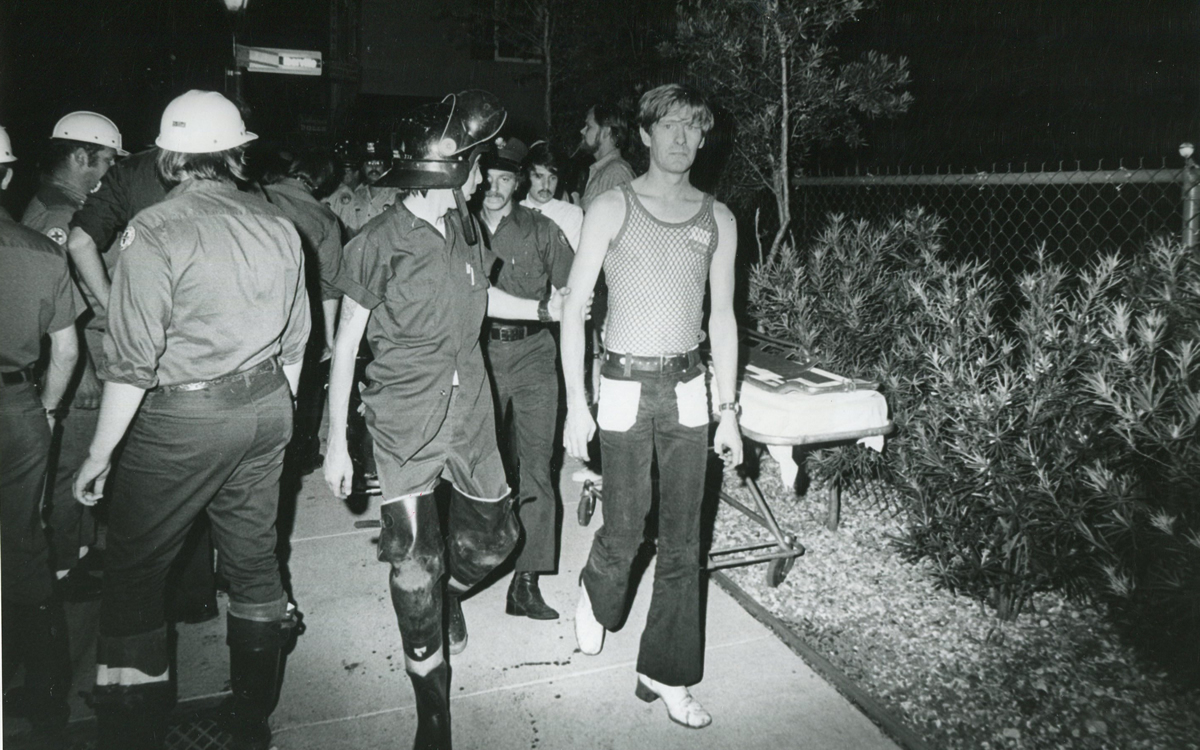
On June 23 of last year, I held the microphone as a gay man in the New Orleans City Council Chamber and related a lost piece of queer history to the seven council members. I told this story to disabuse all New Orleanians of the notion that silence and accommodation, in the face of institutional and official failures, are a path to healing.
The story I related to them began on a typical Sunday night at a second-story bar on the fringe of New Orleans’ French Quarter in 1973, where working-class men would gather around a white baby grand piano and belt out the lyrics to a song that was the anthem of their hidden community, “United We Stand” by the Brotherhood of Man.
“United we stand,” the men would sing together, “divided we fall” — the words epitomizing the ethos of their beloved UpStairs Lounge bar, an egalitarian free space that served as a forerunner to today’s queer safe havens.
Around that piano in the 1970s Deep South, gays and lesbians, white and Black queens, Christians and non-Christians, and even early gender minorities could cast aside the racism, sexism, and homophobia of the times to find acceptance and companionship for a moment.
For regulars, the UpStairs Lounge was a miracle, a small pocket of acceptance in a broader world where their very identities were illegal.
On the Sunday night of June 24, 1973, their voices were silenced in a murderous act of arson that claimed 32 lives and still stands as the deadliest fire in New Orleans history — and the worst mass killing of gays in 20th century America.
As 13 fire companies struggled to douse the inferno, police refused to question the chief suspect, even though gay witnesses identified and brought the soot-covered man to officers idly standing by. This suspect, an internally conflicted gay-for-pay sex worker named Rodger Dale Nunez, had been ejected from the UpStairs Lounge screaming the word “burn” minutes before, but New Orleans police rebuffed the testimony of fire survivors on the street and allowed Nunez to disappear.
As the fire raged, police denigrated the deceased to reporters on the street: “Some thieves hung out there, and you know this was a queer bar.”
For days afterward, the carnage met with official silence. With no local gay political leaders willing to step forward, national Gay Liberation-era figures like Rev. Troy Perry of the Metropolitan Community Church flew in to “help our bereaved brothers and sisters” — and shatter officialdom’s code of silence.
Perry broke local taboos by holding a press conference as an openly gay man. “It’s high time that you people, in New Orleans, Louisiana, got the message and joined the rest of the Union,” Perry said.
Two days later, on June 26, 1973, as families hesitated to step forward to identify their kin in the morgue, UpStairs Lounge owner Phil Esteve stood in his badly charred bar, the air still foul with death. He rebuffed attempts by Perry to turn the fire into a call for visibility and progress for homosexuals.
“This fire had very little to do with the gay movement or with anything gay,” Esteve told a reporter from The Philadelphia Inquirer. “I do not want my bar or this tragedy to be used to further any of their causes.”
Conspicuously, no photos of Esteve appeared in coverage of the UpStairs Lounge fire or its aftermath — and the bar owner also remained silent as he witnessed police looting the ashes of his business.
“Phil said the cash register, juke box, cigarette machine and some wallets had money removed,” recounted Esteve’s friend Bob McAnear, a former U.S. Customs officer. “Phil wouldn’t report it because, if he did, police would never allow him to operate a bar in New Orleans again.”
The next day, gay bar owners, incensed at declining gay bar traffic amid an atmosphere of anxiety, confronted Perry at a clandestine meeting. “How dare you hold your damn news conferences!” one business owner shouted.
Ignoring calls for gay self-censorship, Perry held a 250-person memorial for the fire victims the following Sunday, July 1, culminating in mourners defiantly marching out the front door of a French Quarter church into waiting news cameras. “Reverend Troy Perry awoke several sleeping giants, me being one of them,” recalled Charlene Schneider, a lesbian activist who walked out of that front door with Perry.
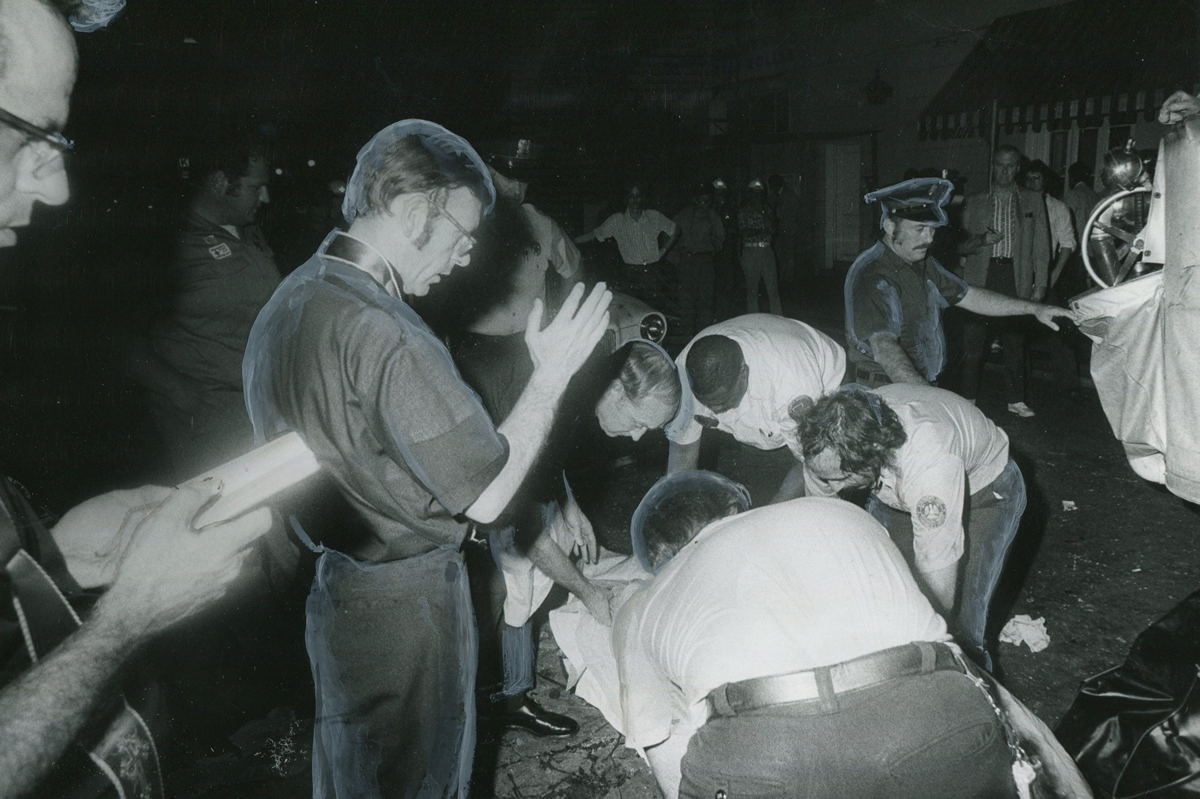
Esteve doubted the UpStairs Lounge story’s capacity to rouse gay political fervor. As the coroner buried four of his former patrons anonymously on the edge of town, Esteve quietly collected at least $25,000 in fire insurance proceeds. Less than a year later, he used the money to open another gay bar called the Post Office, where patrons of the UpStairs Lounge — some with visible burn scars — gathered but were discouraged from singing “United We Stand.”
New Orleans cops neglected to question the chief arson suspect and closed the investigation without answers in late August 1973. Gay elites in the city’s power structure began gaslighting the mourners who marched with Perry into the news cameras, casting suspicion on their memories and re-characterizing their moment of liberation as a stunt.
When a local gay journalist asked in April 1977, “Where are the gay activists in New Orleans?,” Esteve responded that there were none, because none were needed. “We don’t feel we’re discriminated against,” Esteve said. “New Orleans gays are different from gays anywhere else… Perhaps there is some correlation between the amount of gay activism in other cities and the degree of police harassment.”
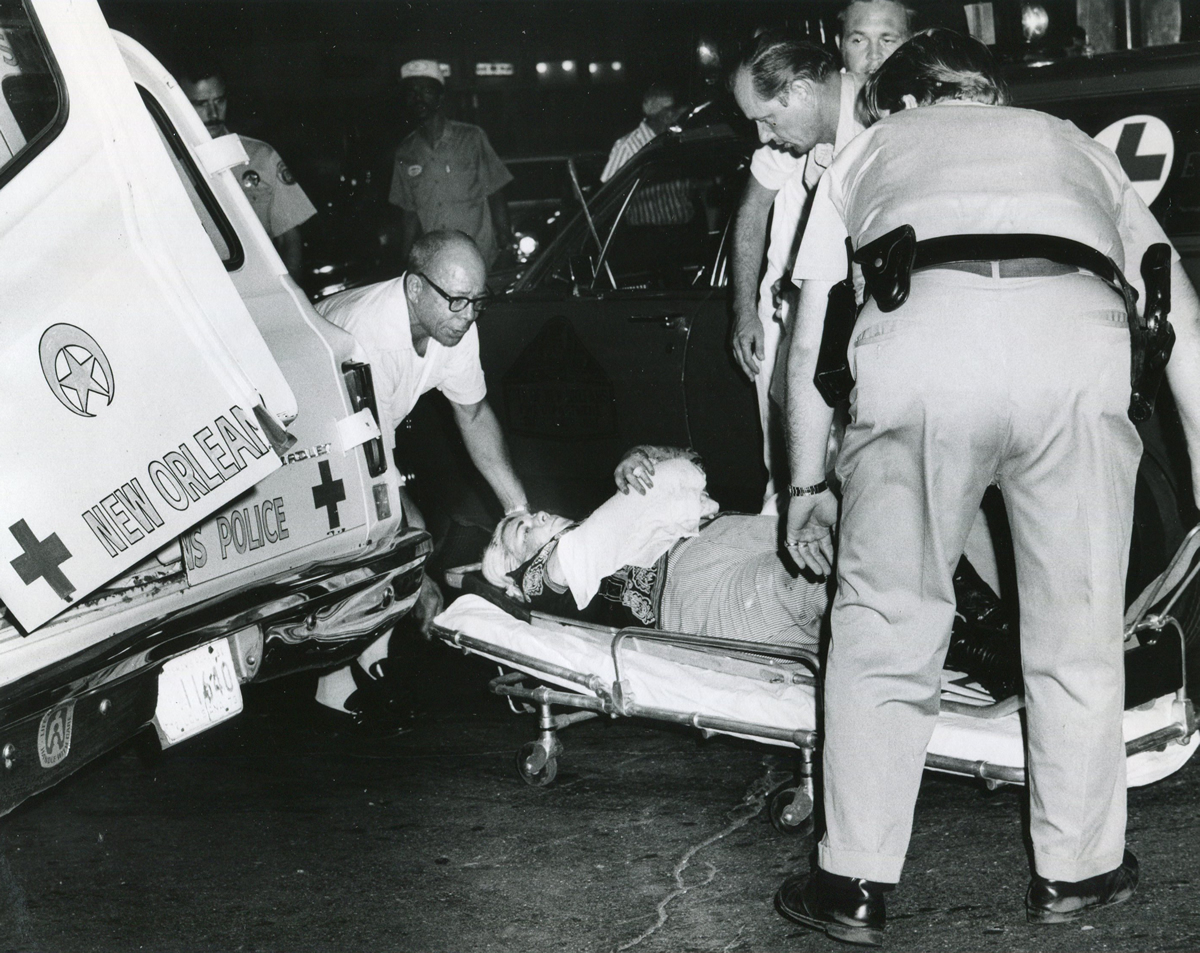
An attitude of nihilism and disavowal descended upon the memory of the UpStairs Lounge victims, goaded by Esteve and fellow gay entrepreneurs who earned their keep via gay patrons drowning their sorrows each night instead of protesting the injustices that kept them drinking.
Into the 1980s, the story of the UpStairs Lounge all but vanished from conversation — with the exception of a few sanctuaries for gay political debate such as the local lesbian bar Charlene’s, run by the activist Charlene Schneider.
By 1988, the 15th anniversary of the fire, the UpStairs Lounge narrative comprised little more than a call for better fire codes and indoor sprinklers. UpStairs Lounge survivor Stewart Butler summed it up: “A tragedy that, as far as I know, no good came of.”
Finally, in 1991, at Stewart Butler and Charlene Schneider’s nudging, the UpStairs Lounge story became aligned with the crusade of liberated gays and lesbians seeking equal rights in Louisiana. The halls of power responded with intermittent progress. The New Orleans City Council, horrified by the story but not yet ready to take its look in the mirror, enacted an anti-discrimination ordinance protecting gays and lesbians in housing, employment, and public accommodations that Dec. 12 — more than 18 years after the fire.
“I believe the fire was the catalyst for the anger to bring us all to the table,” Schneider told The Times-Picayune, a tacit rebuke to Esteve’s strategy of silent accommodation. Even Esteve seemed to change his stance with time, granting a full interview with the first UpStairs Lounge scholar Johnny Townsend sometime around 1989.
Most of the figures in this historic tale are now deceased. What’s left is an enduring story that refused to go gently. The story now echoes around the world — a musical about the UpStairs Lounge fire recently played in Tokyo, translating the gay underworld of the 1973 French Quarter for Japanese audiences.
When I finished my presentation to the City Council last June, I looked up to see the seven council members in tears. Unanimously, they approved a resolution acknowledging the historic failures of city leaders in the wake of the UpStairs Lounge fire.
Council members personally apologized to UpStairs Lounge families and survivors seated in the chamber in a symbolic act that, though it could not bring back those who died, still mattered greatly to those whose pain had been denied, leaving them to grieve alone. At long last, official silence and indifference gave way to heartfelt words of healing.
The way Americans remember the past is an active, ongoing process. Our collective memory is malleable, but it matters because it speaks volumes about our maturity as a people, how we acknowledge the past’s influence in our lives, and how it shapes the examples we set for our youth. Do we grapple with difficult truths, or do we duck accountability by defaulting to nostalgia and bluster? Or worse, do we simply ignore the past until it fades into a black hole of ignorance and indifference?
I believe that a factual retelling of the UpStairs Lounge tragedy — and how, 50 years onward, it became known internationally — resonates beyond our current divides. It reminds queer and non-queer Americans that ignoring the past holds back the present, and that silence is no cure for what ails a participatory nation.
Silence isolates. Silence gaslights and shrouds. It preserves the power structures that scapegoat the disempowered.
Solidarity, on the other hand, unites. Solidarity illuminates a path forward together. Above all, solidarity transforms the downtrodden into a resounding chorus of citizens — in the spirit of voices who once gathered ‘round a white baby grand piano and sang, joyfully and loudly, “United We Stand.”
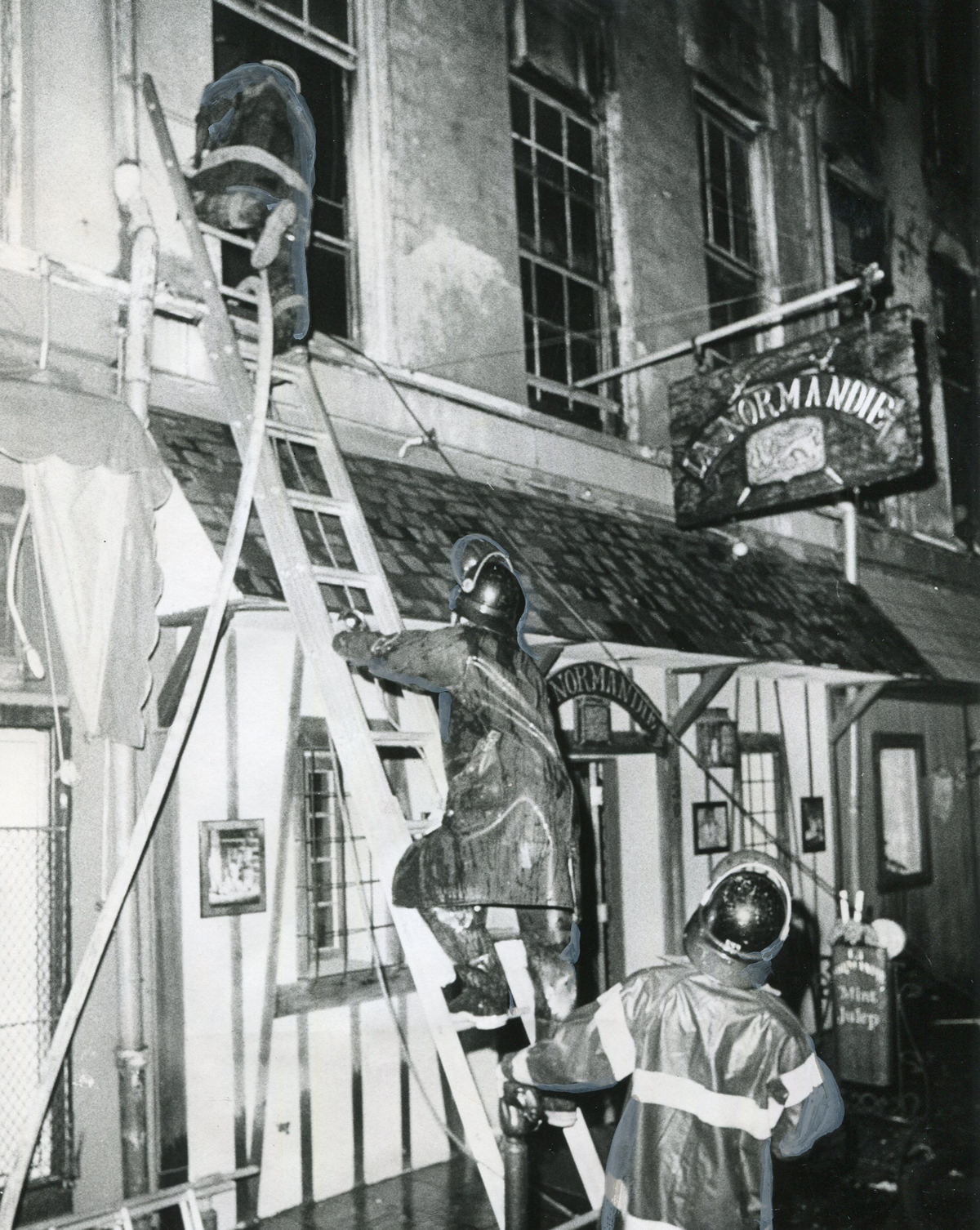
Robert W. Fieseler is a New Orleans-based journalist and the author of “Tinderbox: the Untold Story of the Up Stairs Lounge Fire and the Rise of Gay Liberation.”
homepage news
New Supreme Court term includes critical LGBTQ case with ‘terrifying’ consequences
Business owner seeks to decline services for same-sex weddings
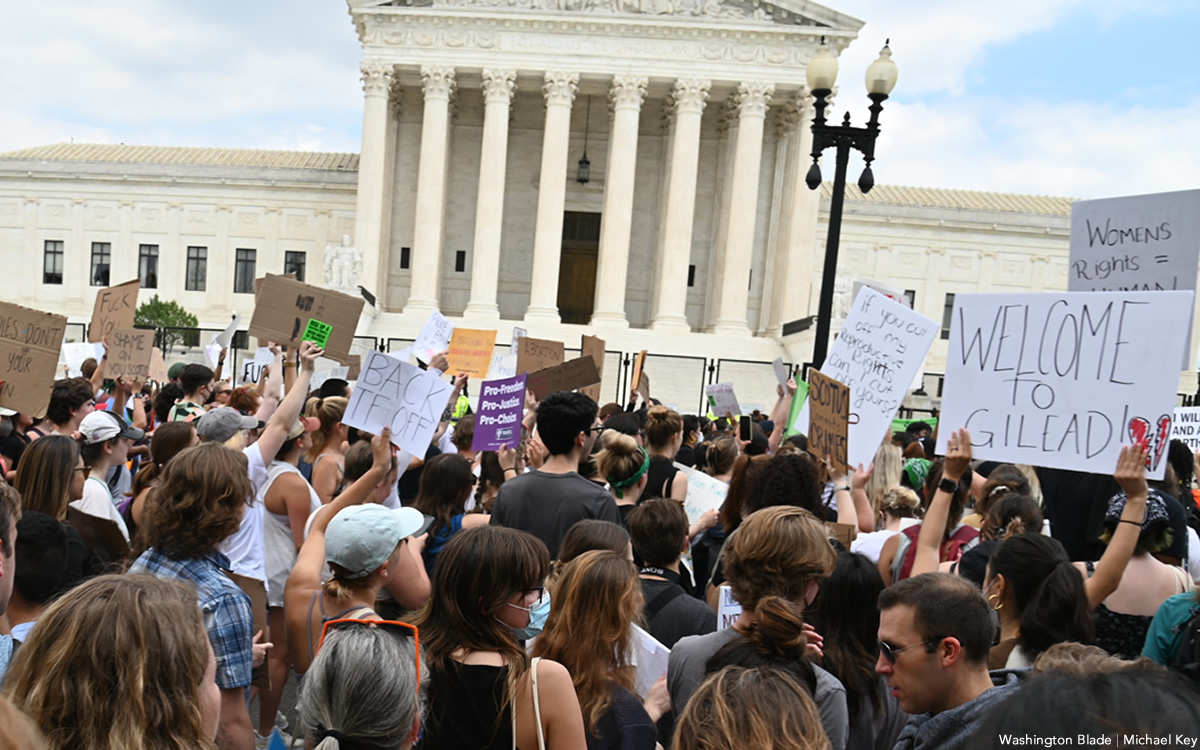
The U.S. Supreme Court, after a decision overturning Roe v. Wade that still leaves many reeling, is starting a new term with justices slated to revisit the issue of LGBTQ rights.
In 303 Creative v. Elenis, the court will return to the issue of whether or not providers of custom-made goods can refuse service to LGBTQ customers on First Amendment grounds. In this case, the business owner is Lorie Smith, a website designer in Colorado who wants to opt out of providing her graphic design services for same-sex weddings despite the civil rights law in her state.
Jennifer Pizer, acting chief legal officer of Lambda Legal, said in an interview with the Blade, “it’s not too much to say an immeasurably huge amount is at stake” for LGBTQ people depending on the outcome of the case.
“This contrived idea that making custom goods, or offering a custom service, somehow tacitly conveys an endorsement of the person — if that were to be accepted, that would be a profound change in the law,” Pizer said. “And the stakes are very high because there are no practical, obvious, principled ways to limit that kind of an exception, and if the law isn’t clear in this regard, then the people who are at risk of experiencing discrimination have no security, no effective protection by having a non-discrimination laws, because at any moment, as one makes their way through the commercial marketplace, you don’t know whether a particular business person is going to refuse to serve you.”
The upcoming arguments and decision in the 303 Creative case mark a return to LGBTQ rights for the Supreme Court, which had no lawsuit to directly address the issue in its previous term, although many argued the Dobbs decision put LGBTQ rights in peril and threatened access to abortion for LGBTQ people.
And yet, the 303 Creative case is similar to other cases the Supreme Court has previously heard on the providers of services seeking the right to deny services based on First Amendment grounds, such as Masterpiece Cakeshop and Fulton v. City of Philadelphia. In both of those cases, however, the court issued narrow rulings on the facts of litigation, declining to issue sweeping rulings either upholding non-discrimination principles or First Amendment exemptions.
Pizer, who signed one of the friend-of-the-court briefs in opposition to 303 Creative, said the case is “similar in the goals” of the Masterpiece Cakeshop litigation on the basis they both seek exemptions to the same non-discrimination law that governs their business, the Colorado Anti-Discrimination Act, or CADA, and seek “to further the social and political argument that they should be free to refuse same-sex couples or LGBTQ people in particular.”
“So there’s the legal goal, and it connects to the social and political goals and in that sense, it’s the same as Masterpiece,” Pizer said. “And so there are multiple problems with it again, as a legal matter, but also as a social matter, because as with the religion argument, it flows from the idea that having something to do with us is endorsing us.”
One difference: the Masterpiece Cakeshop litigation stemmed from an act of refusal of service after owner, Jack Phillips, declined to make a custom-made wedding cake for a same-sex couple for their upcoming wedding. No act of discrimination in the past, however, is present in the 303 Creative case. The owner seeks to put on her website a disclaimer she won’t provide services for same-sex weddings, signaling an intent to discriminate against same-sex couples rather than having done so.
As such, expect issues of standing — whether or not either party is personally aggrieved and able bring to a lawsuit — to be hashed out in arguments as well as whether the litigation is ripe for review as justices consider the case. It’s not hard to see U.S. Chief Justice John Roberts, who has sought to lead the court to reach less sweeping decisions (sometimes successfully, and sometimes in the Dobbs case not successfully) to push for a decision along these lines.
Another key difference: The 303 Creative case hinges on the argument of freedom of speech as opposed to the two-fold argument of freedom of speech and freedom of religious exercise in the Masterpiece Cakeshop litigation. Although 303 Creative requested in its petition to the Supreme Court review of both issues of speech and religion, justices elected only to take up the issue of free speech in granting a writ of certiorari (or agreement to take up a case). Justices also declined to accept another question in the petition request of review of the 1990 precedent in Smith v. Employment Division, which concluded states can enforce neutral generally applicable laws on citizens with religious objections without violating the First Amendment.
Representing 303 Creative in the lawsuit is Alliance Defending Freedom, a law firm that has sought to undermine civil rights laws for LGBTQ people with litigation seeking exemptions based on the First Amendment, such as the Masterpiece Cakeshop case.
Kristen Waggoner, president of Alliance Defending Freedom, wrote in a Sept. 12 legal brief signed by her and other attorneys that a decision in favor of 303 Creative boils down to a clear-cut violation of the First Amendment.
“Colorado and the United States still contend that CADA only regulates sales transactions,” the brief says. “But their cases do not apply because they involve non-expressive activities: selling BBQ, firing employees, restricting school attendance, limiting club memberships, and providing room access. Colorado’s own cases agree that the government may not use public-accommodation laws to affect a commercial actor’s speech.”
Pizer, however, pushed back strongly on the idea a decision in favor of 303 Creative would be as focused as Alliance Defending Freedom purports it would be, arguing it could open the door to widespread discrimination against LGBTQ people.
“One way to put it is art tends to be in the eye of the beholder,” Pizer said. “Is something of a craft, or is it art? I feel like I’m channeling Lily Tomlin. Remember ‘soup and art’? We have had an understanding that whether something is beautiful or not is not the determining factor about whether something is protected as artistic expression. There’s a legal test that recognizes if this is speech, whose speech is it, whose message is it? Would anyone who was hearing the speech or seeing the message understand it to be the message of the customer or of the merchants or craftsmen or business person?”
Despite the implications in the case for LGBTQ rights, 303 Creative may have supporters among LGBTQ people who consider themselves proponents of free speech.
One joint friend-of-the-court brief before the Supreme Court, written by Dale Carpenter, a law professor at Southern Methodist University who’s written in favor of LGBTQ rights, and Eugene Volokh, a First Amendment legal scholar at the University of California, Los Angeles, argues the case is an opportunity to affirm the First Amendment applies to goods and services that are uniquely expressive.
“Distinguishing expressive from non-expressive products in some contexts might be hard, but the Tenth Circuit agreed that Smith’s product does not present a hard case,” the brief says. “Yet that court (and Colorado) declined to recognize any exemption for products constituting speech. The Tenth Circuit has effectively recognized a state interest in subjecting the creation of speech itself to antidiscrimination laws.”
Oral arguments in the case aren’t yet set, but may be announced soon. Set to defend the state of Colorado and enforcement of its non-discrimination law in the case is Colorado Solicitor General Eric Reuel Olson. Just this week, the U.S. Supreme Court announced it would grant the request to the U.S. solicitor general to present arguments before the justices on behalf of the Biden administration.
With a 6-3 conservative majority on the court that has recently scrapped the super-precedent guaranteeing the right to abortion, supporters of LGBTQ rights may think the outcome of the case is all but lost, especially amid widespread fears same-sex marriage would be next on the chopping block. After the U.S. Tenth Circuit Court of Appeals ruled against 303 Creative in the lawsuit, the simple action by the Supreme Court to grant review in the lawsuit suggests they are primed to issue a reversal and rule in favor of the company.
Pizer, acknowledging the call to action issued by LGBTQ groups in the aftermath of the Dobbs decision, conceded the current Supreme Court issuing the ruling in this case is “a terrifying prospect,” but cautioned the issue isn’t so much the makeup of the court but whether or not justices will continue down the path of abolishing case law.
“I think the question that we’re facing with respect to all of the cases or at least many of the cases that are in front of the court right now, is whether this court is going to continue on this radical sort of wrecking ball to the edifice of settled law and seemingly a goal of setting up whole new structures of what our basic legal principles are going to be. Are we going to have another term of that?” Pizer said. “And if so, that’s terrifying.”
homepage news
Kelley Robinson, a Black, queer woman, named president of Human Rights Campaign
Progressive activist a veteran of Planned Parenthood Action Fund
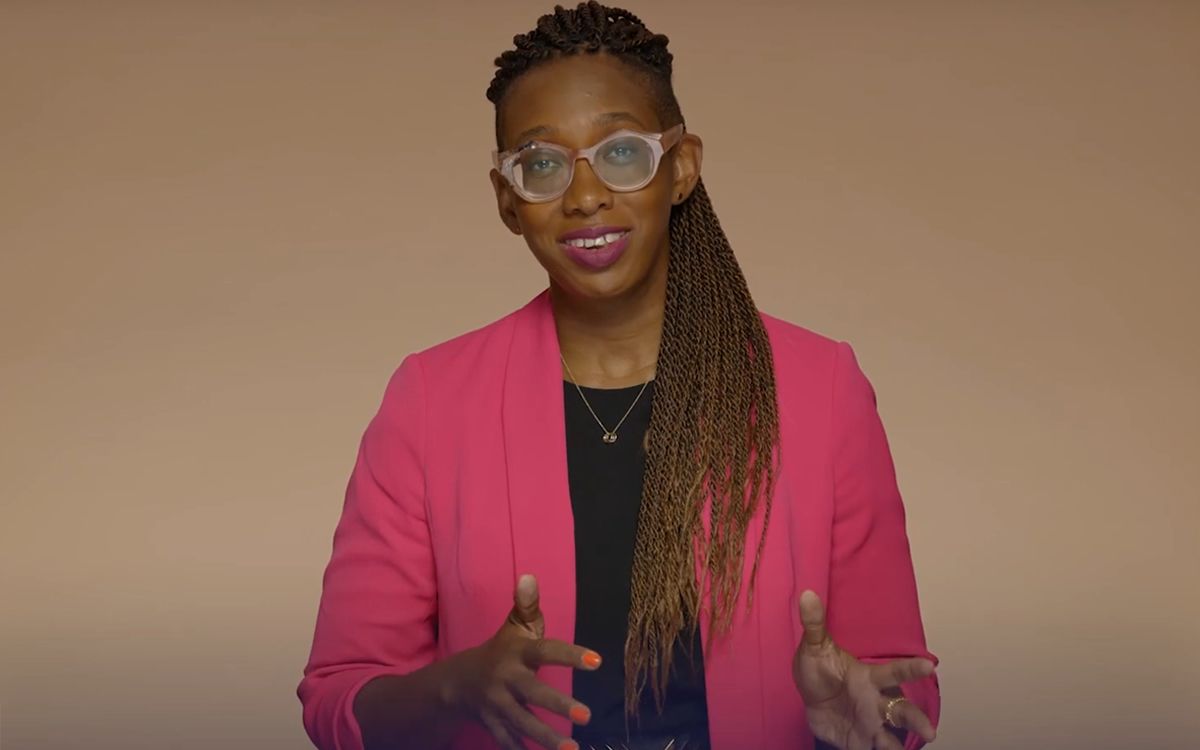
Kelley Robinson, a Black, queer woman and veteran of Planned Parenthood Action Fund, is to become the next president of the Human Rights Campaign, the nation’s leading LGBTQ group announced on Tuesday.
Robinson is set to become the ninth president of the Human Rights Campaign after having served as executive director of Planned Parenthood Action Fund and more than 12 years of experience as a leader in the progressive movement. She’ll be the first Black, queer woman to serve in that role.
“I’m honored and ready to lead HRC — and our more than three million member-advocates — as we continue working to achieve equality and liberation for all Lesbian, Gay, Bisexual, Transgender, and Queer people,” Robinson said. “This is a pivotal moment in our movement for equality for LGBTQ+ people. We, particularly our trans and BIPOC communities, are quite literally in the fight for our lives and facing unprecedented threats that seek to destroy us.”
The next Human Rights Campaign president is named as Democrats are performing well in polls in the mid-term elections after the U.S. Supreme Court overturned Roe v. Wade, leaving an opening for the LGBTQ group to play a key role amid fears LGBTQ rights are next on the chopping block.
“The overturning of Roe v. Wade reminds us we are just one Supreme Court decision away from losing fundamental freedoms including the freedom to marry, voting rights, and privacy,” Robinson said. “We are facing a generational opportunity to rise to these challenges and create real, sustainable change. I believe that working together this change is possible right now. This next chapter of the Human Rights Campaign is about getting to freedom and liberation without any exceptions — and today I am making a promise and commitment to carry this work forward.”
The Human Rights Campaign announces its next president after a nearly year-long search process after the board of directors terminated its former president Alphonso David when he was ensnared in the sexual misconduct scandal that led former New York Gov. Andrew Cuomo to resign. David has denied wrongdoing and filed a lawsuit against the LGBTQ group alleging racial discrimination.
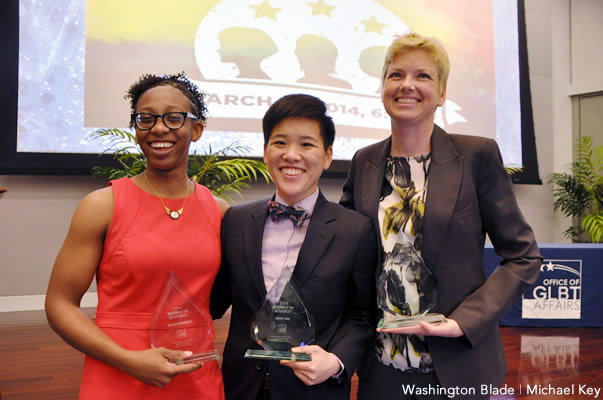
-

 State Department4 days ago
State Department4 days agoState Department releases annual human rights report
-

 District of Columbia2 days ago
District of Columbia2 days agoCatching up with the asexuals and aromantics of D.C.
-

 South America2 days ago
South America2 days agoArgentina government dismisses transgender public sector employees
-

 Politics5 days ago
Politics5 days agoSmithsonian staff concerned about future of LGBTQ programming amid GOP scrutiny

